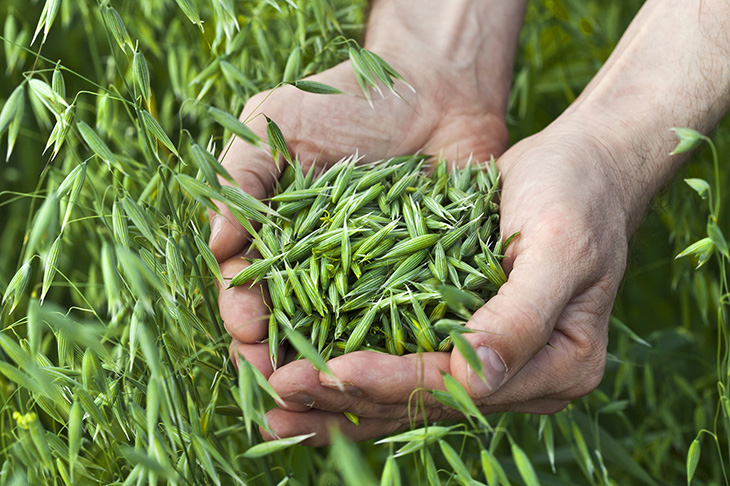
Still time to get in spring-planting oats
Friday, March 5, 2021
Although a mid-February snowstorm disrupted the typical schedule for planting oats in Oklahoma, there is still time to get in a crop.
“The general, rule-of-thumb, cutoff date is about March 10,” said Alex Rocateli, Oklahoma State University Extension forage systems specialist. “Science tells us that oats will germinate after the soil temperatures reach 40 to 43 degrees for a couple of days. Currently, moisture is good and the Oklahoma Mesonet shows our soils have reached this minimum threshold.”
Spring-planted oats can be a great option for producers in central Oklahoma who do not have sufficient wheat, annual ryegrass or fescue pastures, he said.
Key guidance for planting oats includes:
- A wide selection of oat varieties is not available, but those developed for use in the southern United States are preferable to northern varieties.
- Oats should be drill-planted on a conventionally prepared seedbed at a seeding rate of 80 to 100 pounds of seed per acre. OSU Extension recommendations are to go with the recommended seed rate if the bag label states otherwise.
- Seeding depth can be as much as 1.5 inches. However, a depth of only a half inch to three quarters of an inch will speed up emergence and establishment, as well as enhance forage production potential.
- Forage production potential from a spring-planted oat crop should average 1,500 to 2,000 pounds of forage per acre.
- Based on the forage production, planning should include nitrogen fertilizer at a rate of 60 to 75 pounds actual nitrogen per acre after establishment.
Spring-planted oats harvested for hay should be cut at early heading. Once the seed heads begin to emerge, there will be no appreciable increase in yield. Likewise, once the seed heads begin to emerge, there will be a substantial decrease in nutritive value.
“Oat plants should be a minimum of six inches in height before livestock are allowed to begin grazing them,” Rocateli said. “Be sure there is an adequate root system developed before grazing. Grab some leaves and stems and try to pull it off. If the roots come out, it is too early to introduce grazing animals. The leaves and stems should come out and the roots stay in the ground.”
Spring-planted oats mature rapidly once temperatures begin warming. Each acre of oats should be able to provide between 35 and 60 days of grazing for a mature beef animal. Growing animals can be stocked at an average of 1.5 animals per acre.
Rocateli provided additional details about planting oats in a video segment produced as part of the agricultural television program SUNUP. Fact sheets detailing research-based information about spring-planting oats and other possible forage supply options are available online and through OSU Extension county offices.
MEDIA CONTACT: Donald Stotts | Agricultural Communications Services | 405-744-4079 | donald.stotts@okstate.edu
